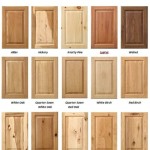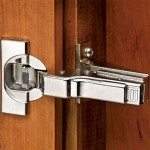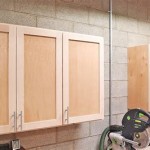Best Grease Remover for Kitchen Cabinets: A Comprehensive Guide
Kitchen cabinets, often the focal point of a kitchen, are susceptible to accumulating grease, especially those near the stovetop. This build-up not only looks unsightly but can also attract dirt and grime, making cleaning a more arduous task. Choosing the right grease remover is crucial for maintaining the cleanliness and longevity of kitchen cabinets.
Key Considerations When Choosing a Grease Remover
Several factors influence the effectiveness and suitability of a grease remover for kitchen cabinets. Understanding these factors allows for informed decisions and optimal cleaning results.
1. Cabinet Material: Different cabinet materials react differently to various cleaning solutions. Wood, laminate, and painted surfaces each have specific requirements. Harsh chemicals can damage delicate finishes, while gentler solutions may be ineffective on stubborn grease.
2. Grease Level: The degree of grease build-up dictates the cleaning power required. Light, everyday grease might be easily removed with a mild detergent, whereas baked-on grease requires a more heavy-duty degreaser.
3. Ingredients: Examining the ingredients list helps determine the safety and efficacy of the product. Some individuals prefer natural, plant-based solutions, while others prioritize powerful chemical degreasers. Awareness of potential allergens or irritants is also crucial.
4. Scent: Many grease removers have strong chemical odors. Opting for unscented options or those with natural fragrances can create a more pleasant cleaning experience.
Types of Grease Removers
Grease removers are formulated with various cleaning agents and come in different forms, each with its own strengths and weaknesses.
1. Spray Cleaners: These are convenient for quick clean-ups and targeting specific greasy areas. They are generally readily available and come in various strengths.
2. Wipes: Pre-moistened wipes offer a portable and mess-free cleaning solution. They are ideal for tackling small spills and daily maintenance.
3. Liquids/Concentrates: These are often more economical and can be diluted to the desired strength. They provide greater control over the cleaning process.
4. Pastes/Creams: Thicker formulas cling to vertical surfaces and are effective on heavily soiled areas. They require more scrubbing but can offer superior cleaning power.
Recommended Grease Removal Techniques
Proper cleaning techniques optimize the effectiveness of grease removers and protect the cabinets from damage.
1. Spot Test: Before applying any cleaner to the entire surface, test it on an inconspicuous area to ensure compatibility with the cabinet material. This prevents potential discoloration or damage.
2. Follow Instructions: Always adhere to the manufacturer's instructions for dilution and application. Using too much or too little cleaner can reduce efficacy or damage the surface.
3. Gentle Scrubbing: Avoid abrasive scrubbers or excessive force, which can scratch or dull the cabinet finish. Soft sponges or microfiber cloths are ideal for most surfaces.
4. Thorough Rinsing: Residue from cleaning solutions can attract more dirt and grime. Rinse thoroughly with clean water after cleaning.
5. Drying: Moisture can damage wood cabinets. Dry the cabinets thoroughly with a clean, dry cloth after rinsing.
Natural Grease Removal Alternatives
For those seeking eco-friendly and less harsh cleaning solutions, several natural alternatives offer effective grease removal.
1. Baking Soda Paste: Combining baking soda with water creates a gentle abrasive paste effective on light grease build-up.
2. Vinegar Solution: White vinegar diluted with water cuts through grease and disinfects surfaces. However, test on an inconspicuous area first, as vinegar can damage certain finishes.
3. Lemon Juice: The acidity of lemon juice helps dissolve grease and leaves a fresh scent. Like vinegar, it should be tested on a small area before widespread use.
Maintaining Clean Kitchen Cabinets
Regular cleaning and preventative measures minimize grease build-up and simplify the cleaning process.
1. Daily Wiping: Wiping down cabinets after each cooking session prevents grease from accumulating and hardening.
2. Ventilation: Proper ventilation during cooking helps reduce airborne grease particles that settle on surfaces.
3. Spill Management: Addressing spills immediately prevents them from setting and becoming harder to remove.
Choosing the Right Product for Your Needs
Selecting the appropriate grease remover depends on the specific needs of your kitchen and cabinets. Consider the cabinet material, level of grease build-up, and personal preferences when making your decision. Prioritizing regular maintenance and preventative measures contributes significantly to maintaining clean and grease-free kitchen cabinets.

The Very Best De For Kitchen Cabinets And How To Use It Flooring Girl

My 6 Top Picks For Degreasing Kitchen Cabinets Before Painting

My 6 Top Picks For Degreasing Kitchen Cabinets Before Painting

The Very Best De For Kitchen Cabinets And How To Use It Flooring Girl

How To Remove Grease From Kitchen Cabinets 3 Methods Bob Vila

How To Remove Grease From Kitchen Cabinets Today S Homeowner

How To Clean Sticky Grease Off Kitchen Cabinets Ovenclean

How To Clean Grimy Kitchen Cabinets With 2 Ingredients

How To Clean White Kitchen Cabinets 3 Best Ways Avoid Abbotts At Home
:max_bytes(150000):strip_icc()/ways-to-clean-wood-kitchen-cabinets-3017289-00-fb8e5ae9eb004ec6b968f9d53e74cd1e.jpg?strip=all)
Tips For Cleaning Food Grease From Wood Cabinets
Related Posts








